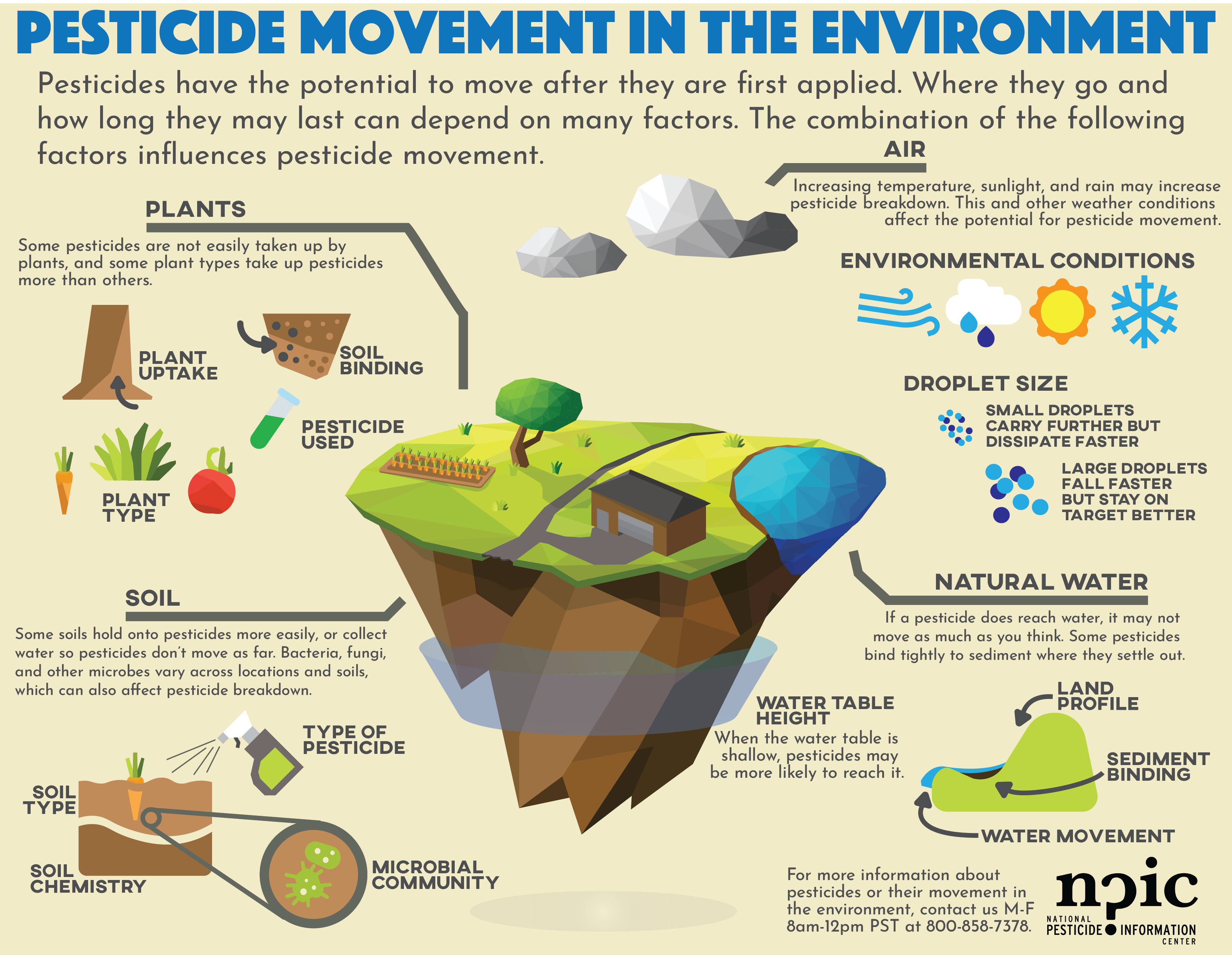What happens to pesticides released in the environment?
1.800.858.7378npic@oregonstate.edu
We're open from 8:00AM to 12:00PM Pacific Time, Mon-Fri
A to Z

What happens to pesticides released in the environment?
Pesticides may become airborne, get into soil, enter bodies of water, or be taken up by plants and animals. The environmental fate of pesticides depends on the physical and chemical properties of the pesticide as well as the environmental conditions. The physical and chemical properties of the pesticide determine how likely it is to travel through soil (soil mobility), how well it dissolves in water (water solubility), and how likely it is to become airborne (volatility).
Once a pesticide has been released into the environment, it can be broken down by:
- exposure to sunlight (photolysis)
- exposure to water (hydrolysis)
- exposure to other chemicals (oxidation and reduction)
- microbial activity (bacteria, fungi, and other microorganisms)
- plants or animals (metabolism)
Scientists do experiments to determine how long pesticides last in various environments. They apply pesticides to soils, leaves, or other surfaces and measure the time it takes for half of the pesticide to break down, a measure called the half-life. After one half-life, half of the chemical may be broken down. Following another half-life, half of the 50% remaining may be broken down, leaving 25% of the original amount and so on. The half-life can be a useful measure of how long a pesticide may last, but studies have found a wide range of half-lives for the same pesticide under different environmental conditions.
Additional Resources:
- Questions About Pesticide Environmental Fate - Extension Toxicology Network (EXTOXNET)
- Movement of Pesticides in the Environment - Extension Toxicology Network (EXTOXNET)
- Pesticides and the Environment - University of Missouri Extension
- Conservation Buffers to Reduce Pesticide Losses - U.S. Department of Agriculture, Natural Resources Conservation Service
- Factsheet on Ecological Risk Assessment for Pesticides - U.S. Environmental Protection Agency
If you have questions about this, or any pesticide-related topic, please call NPIC at 800-858-7378 (8:00am - 12:00pm PST), or email us at npic@oregonstate.edu.

